Home » Residential » Tenant Guides » Boiler
Gas Boiler Trouble Shooting (heating and hot water)
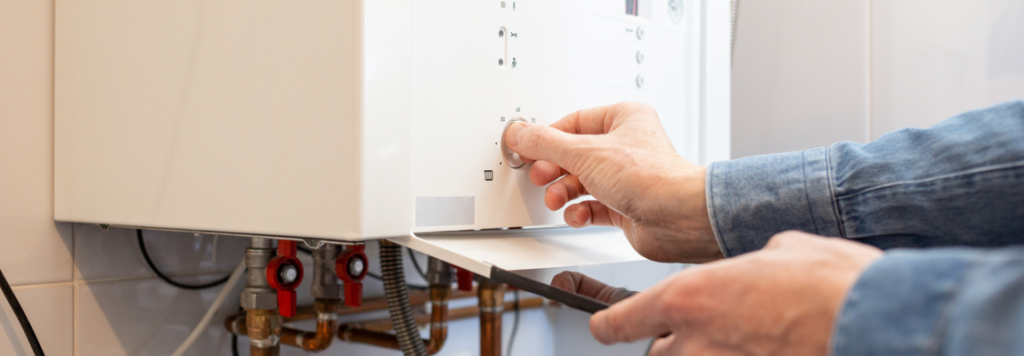
Using this guide, you will be able to sort some really simple issues that sometimes stop boilers from working yourself.
If you discover problems with the heating or hot water at your property, the list of easy checks should help you sort the problem quickly. It’s worth going through the recommendations in this guide before contacting us.
If you can’t solve your problem with the guides and videos below then please report the issue here.
Using Your Boiler
Firstly, if you do not have a manual for the boiler or timer you should easily be able to find a copy online for free. Find the make/model/serial number from your appliance and search for that with ‘manual’ online. If you can’t find it, get in touch with your landlord or managing agent and they will be able to help.
Your gas boiler normally has settings where you can switch between two modes:
- Heating and hot water: You’ll use this mode normally during the colder months.
- Hot water only: Use this setting in the summer months when you need hot water, but don’t need the heating.
Water Temperature: You can normally also control the temperature of the hot water which comes out of your taps. You should set this between 45-60 degrees Celsius. Below 45 and it’s the ideal temperature for legionella to thrive, over 60, you have a risk of scalding.
Timmer: The heating in your home will only work when it’s scheduled to come on; you can set the specific times for this either directly on your boiler, or using the control panel. The instructions for your specific boiler should provide guidance on this.
Thermostat: There will usually be a thermostat (temperature control) in the communal area of your home (examples below). Where you can set the temperature of your home.
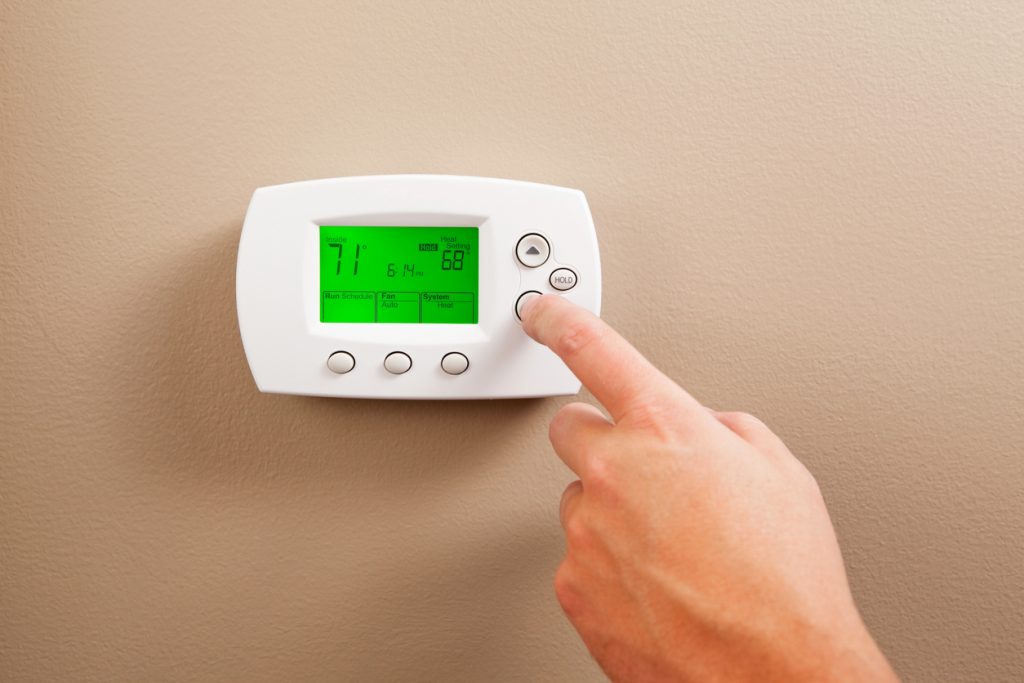
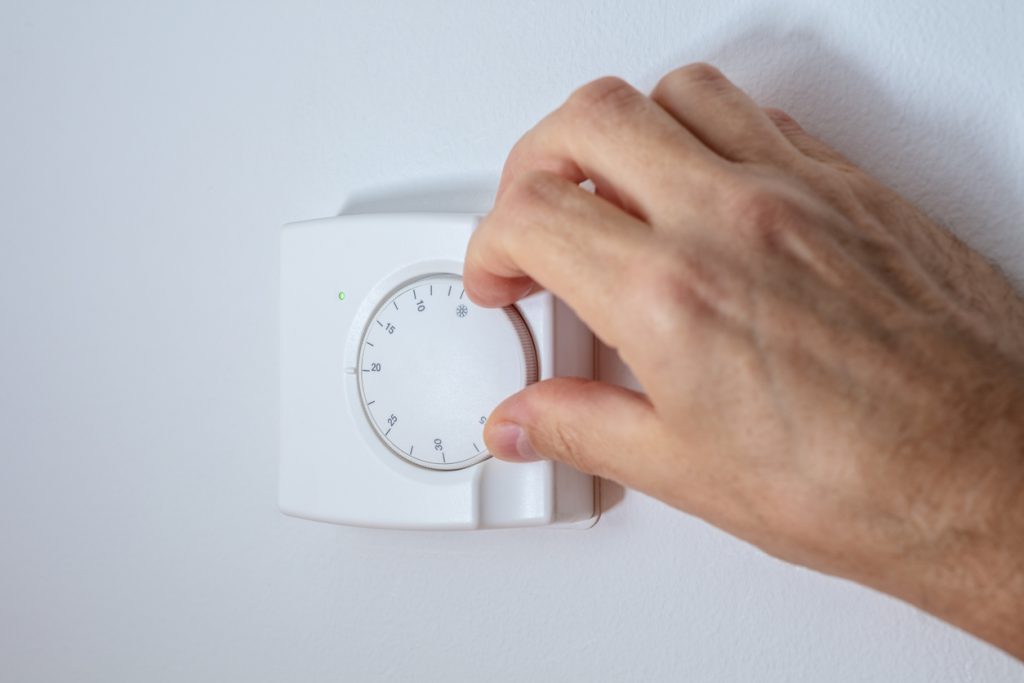
No Heating Or Hot Water
If your heating or hot water is not working, try these initial troubleshooting steps:
1. Check there is power to the boiler, there may be a digital display or light to indicate this or you may be able to hear the boiler working. If it appears to be ‘off’ look nearby for a switch (usually built into the wall) and check that it is on. If it is on and is still not working check your electrical fuse board to make sure nothing has tripped. If you have done all the above and there is still no power to the boiler please let us know.
2. If there’s a problem with the heating, make sure the timer and thermostat are set correctly.
3. Somewhere on the boiler you should be able to find the pressure gauge which will indicate if the boiler is fully pressurised. This should have a reading between 1 and 2 for it to operate correctly. If it has dropped below 1, it will need ‘topping up’ manually (see our guide on repressurising below)
4. Once you have topped up the pressure, you may need to reset your boiler if it has locked out; there is usually a button you can press to do this on the panel otherwise just turn the power switch on and off.
5. Some boilers will have a switch/knob to choose between hot water or hot water & heating, check to see that you have selected both functions if one of the two isn’t working. The may be indicated by symbols (one of a tap, one of a radiator and then both together for both functions to be operating).
6. If none of the above has got the hot water/heating back on please contact us, don’t forget to let us know you have followed the steps above.
If the pressure on the boiler drops on a regular basis there may be a leak on the system, please let us know if you have seen water dripping underneath the boiler or water leaking from the ends of the radiators in any of the rooms and we can instruct an engineer to attend.
In the winter months please leave the heating on low (particularly if you are away from the property) to stop the pipes freezing. Please be reminded that should pipes freeze and damage occur as a result and it is found that your heating has not been set to come on there may be a charge for the repair work, this is a contractual obligation.
We also recommend during the colder months to set a timer on the boiler for the heating to come on a couple of times during the day to keep the house at a good temperature. A lack of heating is usually a big factor in condensation/mould problems in properties.
Heating and Boiler Pressure
Most heating systems are pressurised to ‘push’ hot water around the radiators in your property. If the pressure drops below a certain level then your boiler may stop working. This is the most common reason your heating or hot water will stop working.
Most boilers have a pressure indicator gauge to tell you if the pressure is low, and a way you can top up the pressure.
The pressure gauges are usually situated on the front of the boiler or underneath the bottom of the boiler casing ( see image 1 below). The idea pressure for your boiler is 1.5 bar (or halfway between the green area on the dial). If the pressure on your boiler is too low it is likely that it will ‘lock-out’ meaning you will have no heating or hot water.
How to repressurise a heating system with an external filling hose
Most boilers are topped up using a ‘filler loop’ which is normally a flexible hose or copper piping with either one or two valves, that might be black or blue. Image 2 and 3 below show examples of two different types of filling loops. In mage 1, the values to turn are the two black ones, in image 3, the valves are blue.
You will need to turn the valve 45 degrees, if there is only one valve you should hear a hissing type sound straight away, if there are two valves you may have to turn one or both of them until you hear that sound.
The hissing sound is water rushing into the system; you should also see the needle on the pressure gauge move. When it reaches about 1.5 bar (half way between 1 and 2 on the gauge). close the valve(s) that you used have just opened. The hissing sound should stop, and the needle will stop moving.
It is vital that when the desired pressure (around 1.5 bar) is reached the valve is fully closed; otherwise the system will become over pressurised and stop working.
One you’ve finished re-pressurising the system, you may find the boiler starts working again automatically, alternatively, you might need to reset it by turning it on and off.
If these steps don’t work, get in touch with your landlord or managing agent. If Purple Frog manages your property, you can report maintenance issues here.
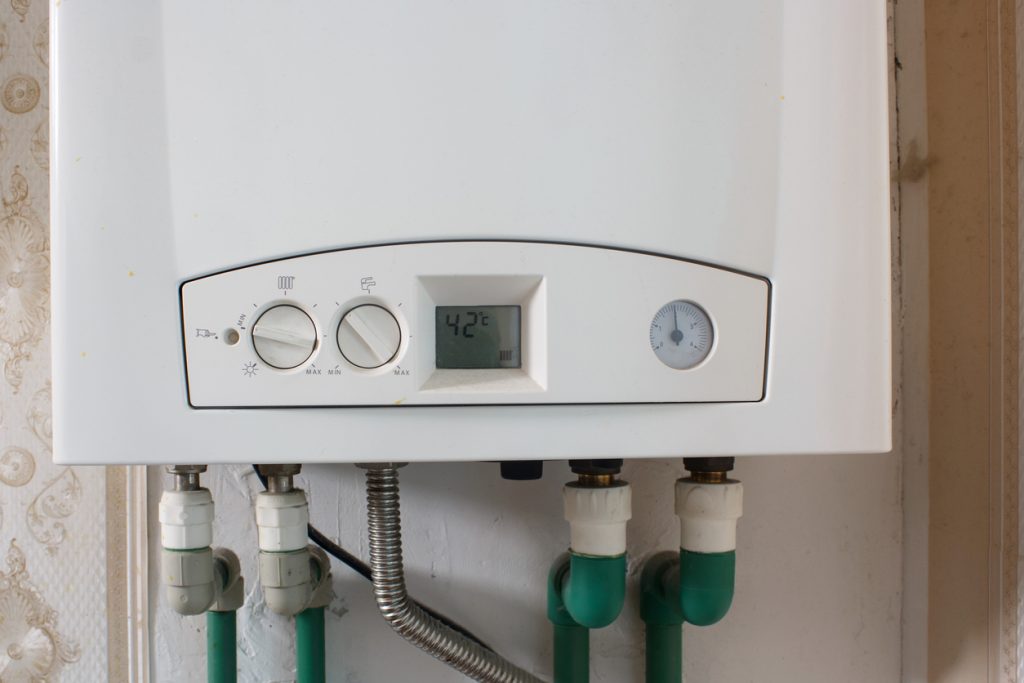
Image 1
Typical pressure gauge (circle on right hand side)
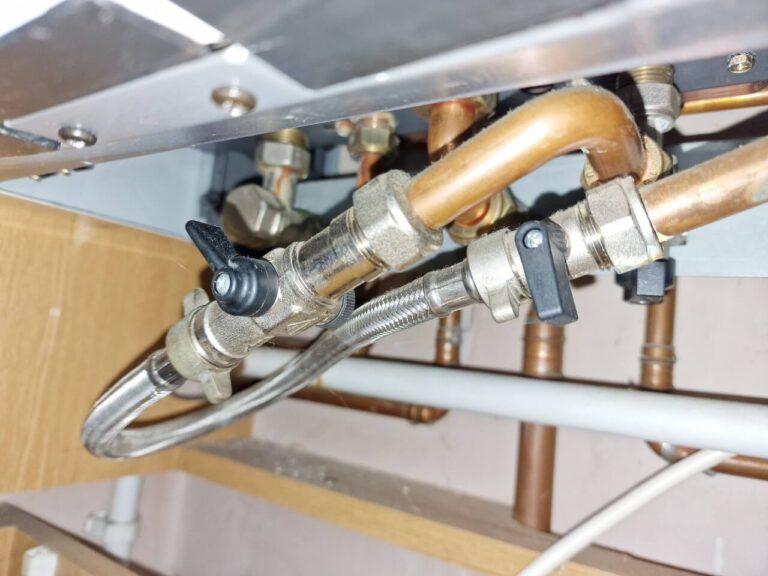
Image 2
Example of a filling loop
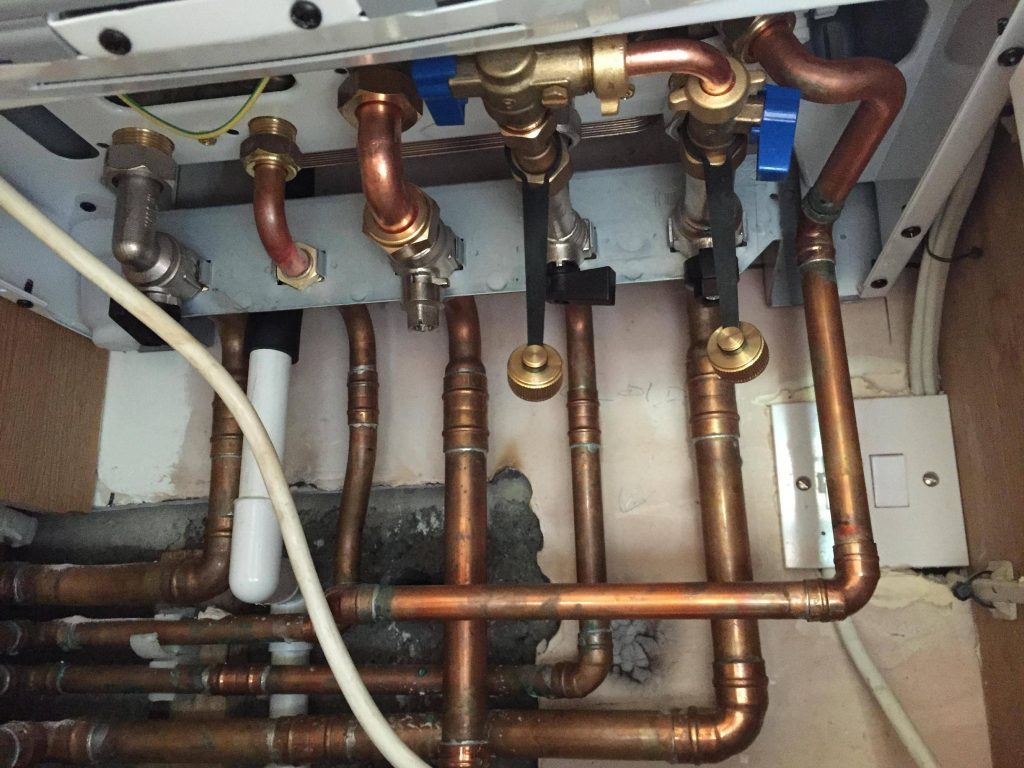
Image 3
Example of a filling loop
Radiator Not Working / Bleeding a Radiator
If your radiator is not working, the first thing to check that the heating for your house is working. If it is, the next thing to check is the valve (see photo 4 below), which controls the heat for the specific radiator. The higher the number on the valve, the hotter the radiator should be.
If that doesn’t work, or if only part of your radiator gets warm, you’ll need to bleed the radiator; which is basically removing any trapped air in the system which may be causing the problem.
1. What You’ll Need
- A radiator key or a flat-blade screwdriver, depending on your radiator’s bleed valve. If you need a key, ask your local office and they can provide one for you. There may also be one on the back door key for your house.
- A cloth or small container to catch any drips.
2. Identify the Need to Bleed
- Check if the top of the radiator is cooler than the bottom. If so, it likely needs bleeding.
3. Turn Off Heating
- Ensure your central heating is turned off and the radiators are cool to avoid burns.
4. Locate the Bleed Valve
- The bleed valve is usually found at the top corner of the radiator.
5. Bleeding the Radiator
- Insert the radiator key or screwdriver into the valve.
- Hold the cloth or container under the valve to catch any water.
- Slowly turn the key or screwdriver counter-clockwise to open the valve. You should hear a hissing sound as the air escapes.
- As soon as water starts dripping out, close the valve by turning it clockwise.
6. Check Pressure
- After bleeding, check the pressure gauge on your boiler. If the pressure is too low, you may need to repressurise the system.
7. Turn Heating Back On
- Once you’ve finished, turn your heating back on and check that the radiators are heating up evenly. If they aren’t, get in touch with your landlord or managing agent.
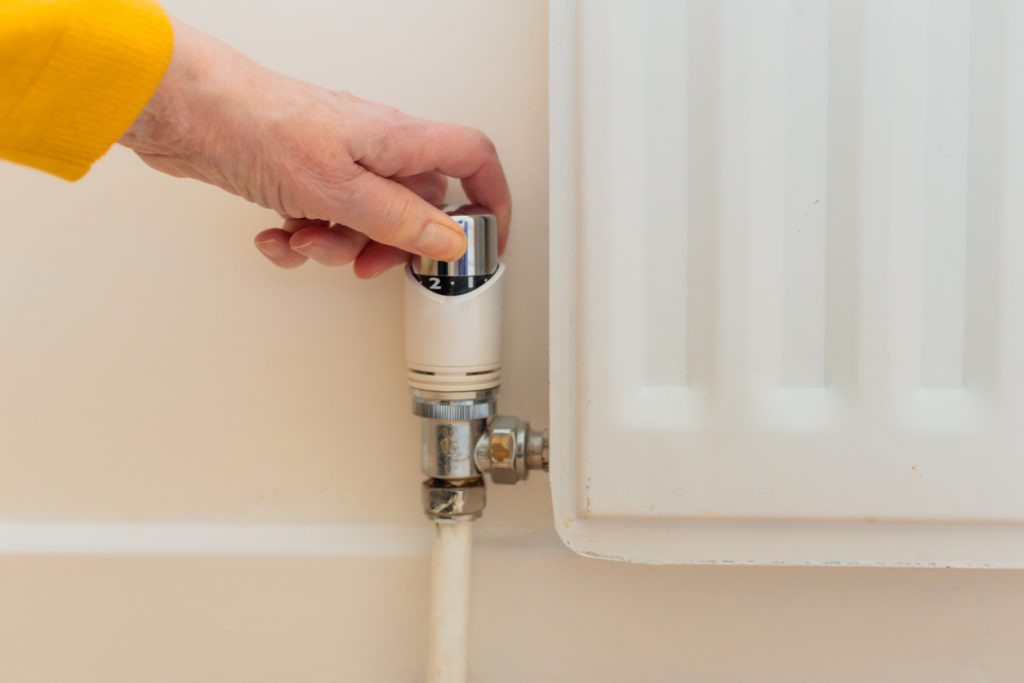
Image 4
Radiator Thermostatic Valve
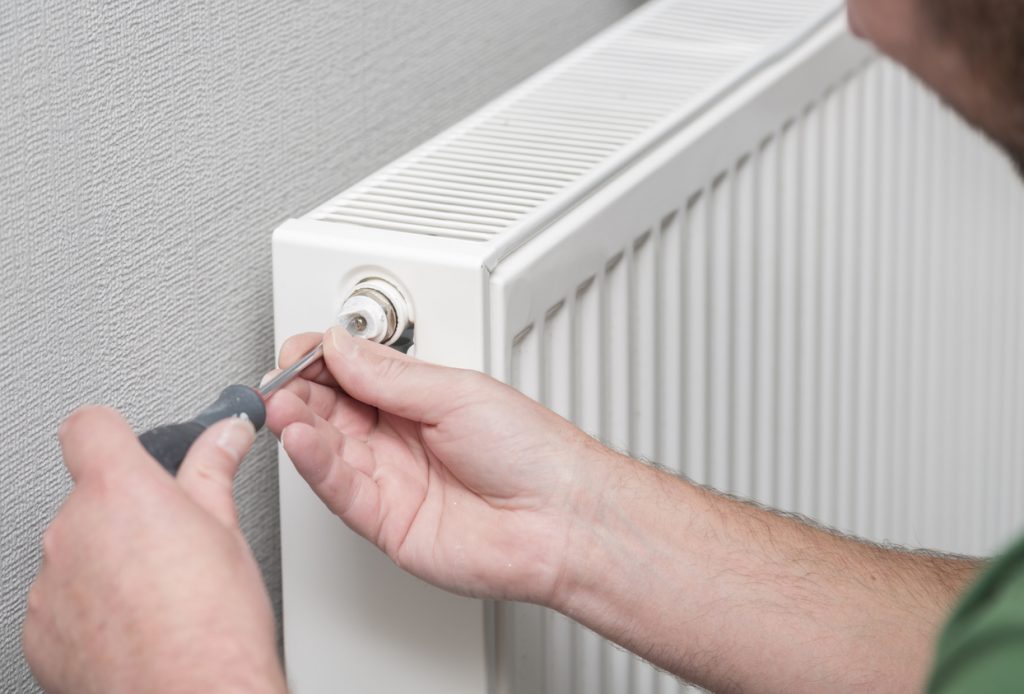
Image 5
Bleeding a Radiator
